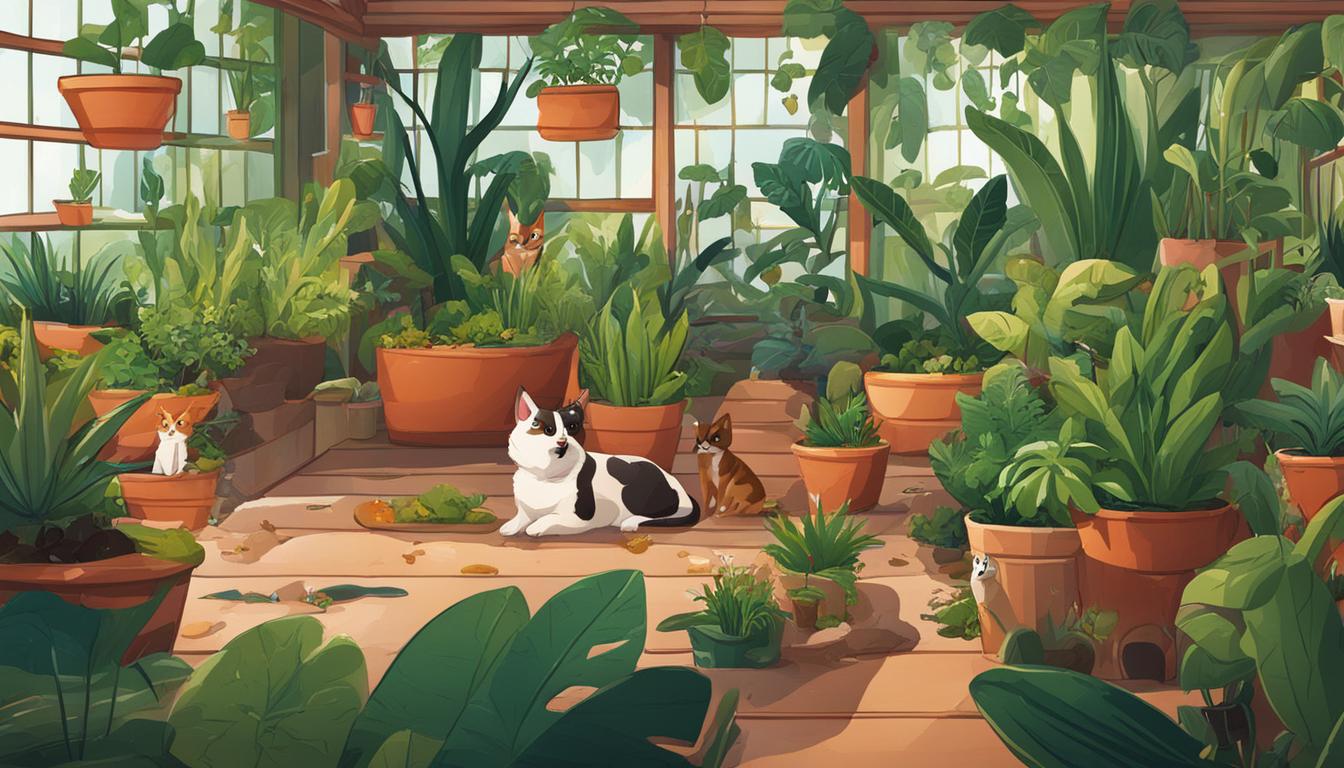
As a pet owner, I am always concerned about the well-being of my furry companions. Recently, I’ve been exploring the impact of indoor plants on pet health and safety, and it’s been an eye-opening journey.
Indoor plants can have both positive and negative effects on pets, so it’s crucial for us to understand the relationship between indoor plant health and pet safety.
While some indoor plants can be toxic and pose serious risks to our pets, there are also pet-friendly plants that can provide benefits to both pets and their owners.
It’s important to be aware of the potential hazards associated with indoor plants and take necessary precautions to ensure the safety of our beloved pets.
Key Takeaways:
- Indoor plants can have both positive and negative effects on pet health and safety.
- Some indoor plants are toxic and can cause serious illness or even death to pets.
- There are pet-friendly plants that can provide benefits to both pets and their owners.
- It’s crucial for pet owners to be aware of potential hazards and take necessary precautions.
- Choosing pet-friendly plants and ensuring their safety around indoor plants is important.
Identifying Toxic Plants for Pets
When it comes to keeping our pets safe around indoor plants, it is essential to be aware of the potential hazards associated with certain plants.
Some common household plants can be toxic to pets if ingested, leading to various health issues. To ensure the well-being of our furry friends, it is crucial to be able to identify these toxic plants and take necessary precautions.
Common Toxic Plants for Pets
| Plant | Potential Toxicity |
|---|---|
| Lilies | Can cause kidney failure in cats |
| Ivy | Can cause gastrointestinal upset and skin irritation |
| Aloe Vera | Can cause vomiting, diarrhea, and tremors |
| Jade Plants | Can cause vomiting, depression, and coordination issues |
These are just a few examples of toxic plants for pets. It is important to note that different species and varieties of plants can have varying levels of toxicity. If you suspect your pet has ingested a toxic plant, it is recommended to contact your veterinarian immediately.
Identifying and Eliminating Pet Hazards
Identifying toxic plants is the first step in ensuring pet safety. To further minimize risks, pet owners should consider keeping these plants out of reach of their pets. Placing them in areas that are inaccessible or using hanging pots can help prevent accidental ingestion.
Additionally, it is advisable to educate oneself about pet-friendly indoor plants that are safe alternatives. By opting for pet-friendly plants, pet owners can create a beautiful and safe environment for both their pets and themselves.
Ensuring Pet Safety Around Indoor Plants
When it comes to keeping our pets safe and maintaining the health of our indoor plants, there are several important steps that pet owners can take. By implementing these pet-friendly gardening tips, you can create a safe and enjoyable environment for both your furry friends and your beloved greenery.
Creating a Pet-Safe Space
One of the first steps to ensure pet safety around indoor plants is to create a designated pet-free space for your plants. This can be achieved by blocking off plant areas or rooms using baby gates or fences.
By establishing boundaries, you can prevent your pets from accessing the plants and potentially causing harm to themselves or damaging the plants.
Choosing Pet-Friendly Plants
Another crucial aspect of maintaining a pet-safe environment is selecting pet-friendly plants. Opting for non-toxic plants that are safe for pets to be around is essential.
Some examples of pet-friendly indoor plants include spider plants, Boston ferns, and areca palms. These plants not only add beauty to your space but also contribute to cleaner air quality.
Providing Distractions and Deterrents
Keeping your pets occupied and distracted from the temptation of chewing or playing with your plants is another key strategy. Provide your pets with plenty of toys and activities to keep them engaged and entertained.
Additionally, consider using natural deterrents such as citrus peels or bitter sprays to discourage your pets from approaching the plants.
| Plant | Pet-Friendly Rating |
|---|---|
| Spider Plant | Pet-friendly |
| Boston Fern | Pet-friendly |
| Areca Palm | Pet-friendly |
By following these pet-friendly gardening tips, you can create a harmonious living space where both your pets and plants can thrive. Remember to always research and identify any potential hazards associated with specific plants before bringing them into your home. Your pets will thank you for it!
The Benefits of Pet-Friendly Indoor Plants
Indoor plants not only add beauty and tranquility to our living spaces but also have the potential to positively impact the health and well-being of our pets. Pet-friendly indoor plants can provide numerous benefits, both physical and psychological, for our furry companions.
One of the key benefits of pet-friendly indoor plants is their ability to improve air quality. Plants naturally filter the air by removing toxins and releasing oxygen, creating a healthier environment for both pets and humans.
This can be especially beneficial for pets with respiratory issues or allergies, as the presence of indoor plants can help alleviate symptoms and promote better breathing.
Moreover, pet-friendly indoor plants can have a calming effect on pets. The sight and presence of greenery can help reduce stress and anxiety in animals, creating a peaceful and soothing atmosphere.
This is particularly important for pets that may experience separation anxiety or exhibit destructive behaviors when home alone.
In addition to the physical and psychological benefits, certain pet-friendly indoor plants can also have specific health benefits for animals.
For example, plants such as aloe vera or catnip can provide natural remedies for digestive issues or stress-related ailments. These plants can be a safe and effective alternative to harsh medications, promoting holistic well-being for our pets.
| Pet-Friendly Indoor Plants | Health Benefits |
|---|---|
| Aloe Vera | Helps soothe digestive issues |
| Catnip | Reduces stress and anxiety |
| Spider Plant | Improves air quality |
| Areca Palm | Adds humidity to the air |
However, it is important to note that while pet-friendly indoor plants can offer these benefits, not all plants are safe for pets. Pet owners should research and choose plants that are non-toxic to their specific type of pet. It is always recommended to consult with a veterinarian to ensure the safety and well-being of our beloved companions.
Tips for choosing and caring for pet-friendly plants
When it comes to selecting indoor plants for your home, it’s essential to choose pet-friendly options that will not only enhance your living space but also ensure the safety and well-being of your furry friends. Here are some tips to help you make informed choices and maintain the health of your indoor plants while keeping your pets safe.
1. Consider the specific needs: Different plants have varying requirements for light, water, and soil. Before bringing any plant into your home, research its specific care needs and ensure they align with your abilities and available resources. This will help prevent any potential harm to your pets and ensure the longevity of your indoor plants.
2. Mind the size and growth rate: Take into account the size and growth rate of the plants you choose. Some plants may grow rapidly or become too large for your living space, posing a potential hazard to your pets. Opt for plants that are suitable for your home’s size and can be easily managed in terms of pruning and maintenance.
3. Proper care and maintenance: To maintain the health of your indoor plants while keeping your pets safe, it’s crucial to provide them with the care they need. This includes regular watering, appropriate fertilization, and pruning when necessary. By attending to your plants’ needs, you can create a thriving environment while minimizing any risks to your pets.
4. Consult reliable resources: When in doubt about the pet-friendliness of a particular plant, consult trusted sources such as the American Society for the Prevention of Cruelty to Animals (ASPCA) which provides comprehensive lists of toxic and non-toxic plants for pets. These resources can help you make educated choices and ensure the well-being of your beloved pets.
After reading this, check out our other articles on:
FAQ
Are there any indoor plants that are toxic to pets?
Yes, there are several common household plants that are toxic to pets, including lilies, ivy, aloe vera, and jade plants. Ingesting these plants can cause various symptoms in pets such as vomiting, diarrhea, drooling, and even organ failure. It is crucial for pet owners to be able to identify these toxic plants and keep them out of reach of their pets.
How can I ensure the safety of my pets around indoor plants?
There are several measures that pet owners can take to ensure the safety of their pets around indoor plants. These include keeping plants out of reach, blocking off plant areas or rooms, using repellents to deter pets from accessing plants, providing distractions to keep pets occupied, and knowing who to call in case of an emergency. Additionally, pet owners should choose pet-friendly plants that are non-toxic and safe for their pets to be around.
What are the benefits of pet-friendly indoor plants?
Pet-friendly indoor plants can help improve air quality, reduce stress, and create a calming environment for both pets and their owners. Some pet-friendly indoor plants can also have specific health benefits for pets, such as providing natural remedies for certain ailments or contributing to a sense of well-being.
How do I choose and care for pet-friendly plants?
When choosing pet-friendly plants, it is important to consider their specific needs in terms of light, water, and soil. Pet owners should also be mindful of the size and growth rate of the plants to ensure they are suitable for their living space. Proper care and maintenance of indoor plants, such as regular watering, pruning, and fertilizing, will help ensure their health while keeping pets safe. It is also recommended to consult resources such as the ASPCA’s list of toxic and non-toxic plants for pets to make informed choices.

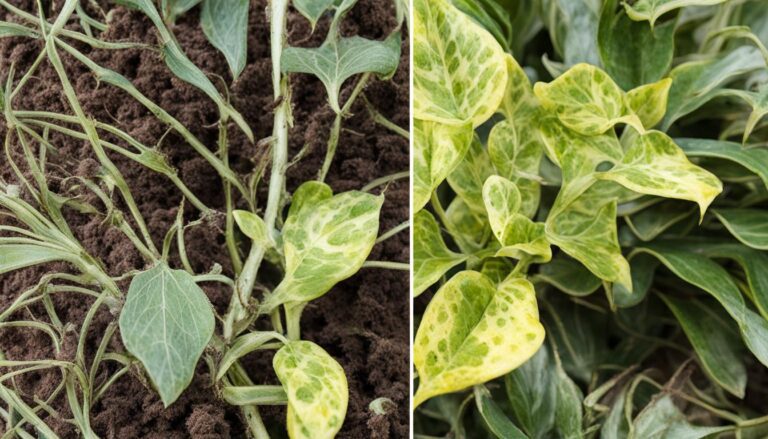

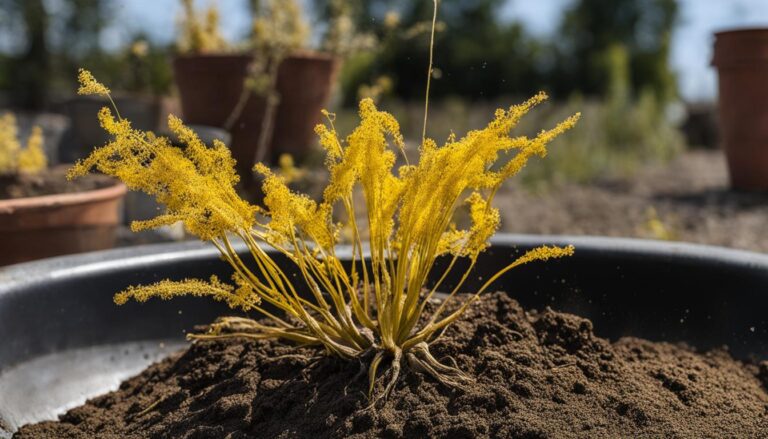
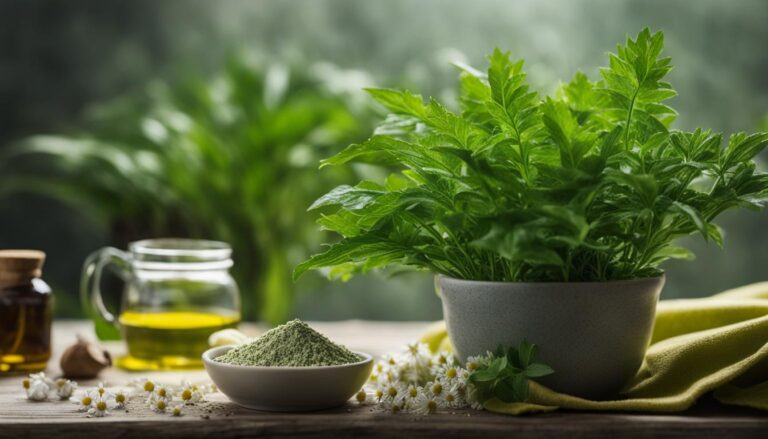

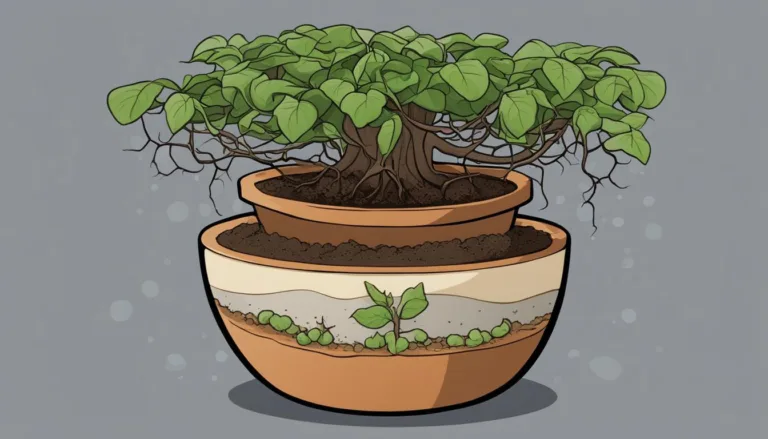
One Comment
Comments are closed.